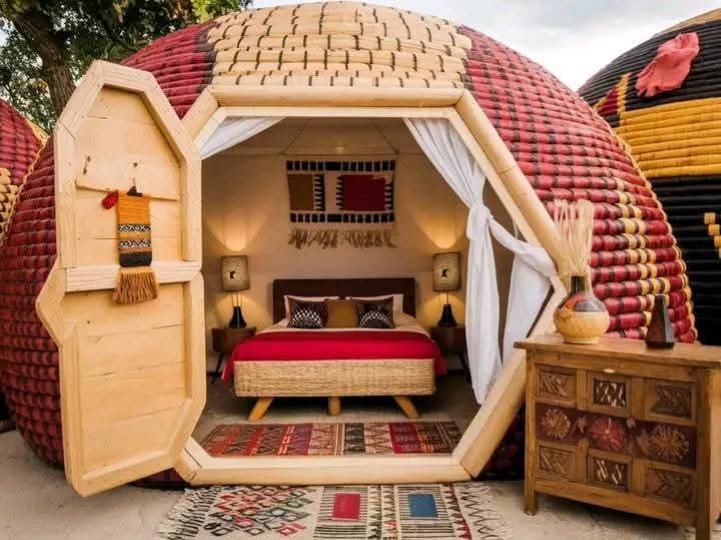They are being described as ‘Sustainable Architecture Meets Traditional African Design.’
Essentially, the housing structures are modern Huts in an African Village Setting.
A team of innovative architects has designed and constructed a modern hut that seamlessly blends traditional African design with sustainable architecture.
The result is a stunning and functional dwelling that not only provides a comfortable living space for its inhabitants but also showcases the perfect fusion of old and new.
The design brief was to create a modern hut that would serve as a model for sustainable and culturally sensitive architecture in African villages.
The architects were tasked with incorporating traditional African design elements while also ensuring that the structure was environmentally friendly, durable, and easy to maintain.
The Design Solution
The modern hut is constructed using locally sourced materials, including natural stone, earth bags, and sustainably harvested wood.
The structure’s design is inspired by traditional African huts, with a curved roof and a central courtyard. However, the architects have incorporated modern twists, such as large windows, solar panels, and a rainwater harvesting system.
Sustainable Features
The modern hut boasts several sustainable features that reduce its environmental footprint. These include solar panels that provide electricity, reducing reliance on fossil fuels.
They are equipped with a rainwater system that collects and stores rainwater for non-potable uses, such as flushing toilets and washing clothes.
Natural Ventilation in the huts design allows for organic aeration, reducing the need for air conditioning and heating.
Locally Sourced Materials are used to reduce the carbon footprint associated with transportation and support the local economy.
Cultural Significance
Africa’s modern hut is not only a sustainable and functional dwelling but also a celebration of African culture and tradition.

The architects have incorporated cultural design elements, such as curved roofs inspired by traditional African huts, providing a unique and distinctive silhouette.
Then there is the central courtyard, a common outdoor foyer in traditional African architecture and provides a peaceful and private outdoor space.
The architects worked with local artisans to incorporate traditional African crafts and patterns into the huts’ cosmetic design.
The modern hut in an African village setting is a testament to the power of sustainable architecture and cultural sensitivity.
By incorporating traditional African design elements and sustainable features, the architects have created a dwelling that not only provides a comfortable living space but also celebrates African culture and tradition. This innovative design serves as a model for future sustainable architecture projects in African villages and beyond.
References:
· Sustainable Architecture in Africa by Dr. Maria Kaika
· Traditional African Architecture by Dr. John Mugane

